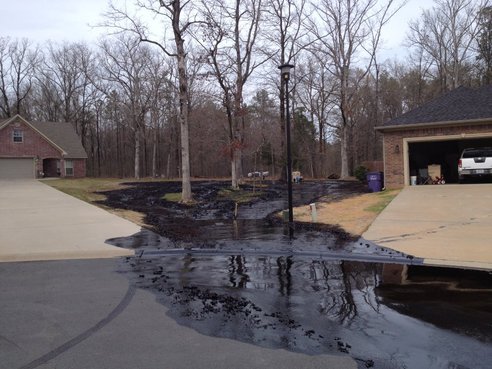Oil spills don’t just happen at sea

There’s been considerable talk lately that President Obama is poised to approve the Keystone XL pipeline and what impact a large scale pipeline disaster might have in the U.S. and now we actually have an example...on a small scale.
ExxonMobil, (you remember their environmental track record, right?), a Pegasus pipeline that takes Canadian oil from Illinois to Texas, ruptured at the end of March, spilling thousands of gallons of oil into the sleepy little town of Mayflower, Arkansas.
A pipeline is an underground passage that transports oil from one place to the other. The bigger the pipe, the more oil can be sent. These pipelines are crisscrossing all over the United States and Canada and more will likely be built in the near future.
I can’t help but feel bad for the town of Mayflower because they’re not even involved with the production or distribution of the oil. The town is simply in the path and now at least 80,000 gallons oil sludge ended up bubbling up into people’s yards and homes.
What is really shocking is the photos. Entire yards filled with oily sludge, oil running down streets and dangerously near Lake Conway. Luckily, the spill never reached it or didn't happen near other large bodies of water because it could have been a major ecological disaster for the state.
People tend to think that oil disasters only happen in the Middle East or at sea while being transported by tankers, but that’s not true. Oil pipelines are becoming the preferred domestic method of transporting oil in North America and that means oil disasters in America’s heartland.
These states are not equipped or trained to deal with something of that magnitude and if one of the giant pipelines from Canada transporting oil into the U.S. should break, then it could make the Mayflower rupture look like an oil leak in your Chevy. It should serve as a wake-up call that maybe environmentalists actually know what they are talking about.
Photo courtesy of Treehugger
1 comments